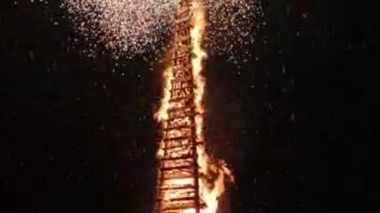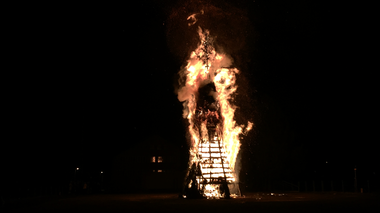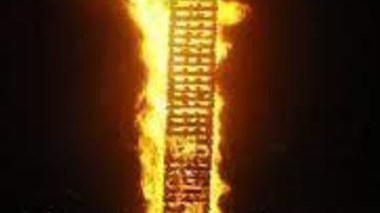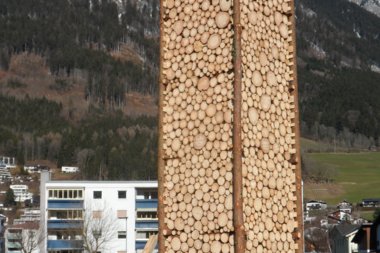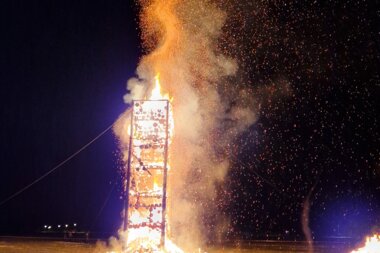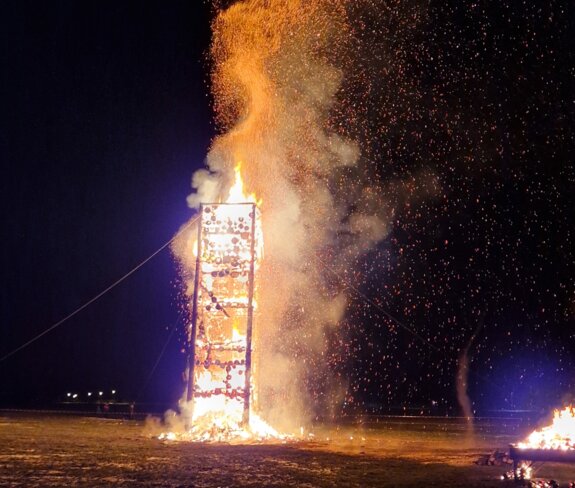
Of mystical traditions
The spark fire
Anyone out and about in Vorarlberg on the first weekend after Ash Wednesday will be amazed to see burning wooden towers and impressive fires everywhere. In some places, burning windows are hurled through the air, in others children wander through the village with lanterns.
What is this spectacle all about?
The traditional burning of sparks is an ancient Swabian-Alemannic tradition whose origins are not fully understood. Some people may think that the burning of wooden towers and witch dolls is a remnant of the terrible witch burnings in the early modern era, but this is a misconception! The origins of the fires can be found in ancient pagan fertility rites with sacrificial fires, as well as in the end of the Swabian-Alemannic carnival and the beginning of Lent. In Vorarlberg, the practice of Bonfire Sunday has a long tradition; in almost every municipality, a bonfire is organized by the local spark guild, the local fire department or the carnival guilds. In 2010, Vorarlberg's Spark Sunday was even included in the world cultural heritage list.
Every year on Spark Sunday, the so-called spark fir is lit. This is a piled-up wooden tower consisting of collected materials, e.g. old Christmas trees. According to popular belief, the sparks are supposed to drive away winter and ignite happiness. The winter witch, which is attached to the top of the spark, symbolizes the beginning of spring. It is usually prepared with black powder so that it can explode in the fire. Once the spark is lit, the spark master gets nervous... and not without reason! He waits for the witch to explode - if this doesn't happen, she has to be buried the next day.
In Vorarlberg, Spark Sunday has a second name: Küachli Sunday - the name says it all! The delicious little cakes made from yeast dough, refined with powdered sugar, not only make the hearts of Funkenzunft members beat faster. Funkaküachli are a must when visiting the Funken - and if you can't get enough of them, you can easily bake them at home - click here for the recipe.
Bludenzer Funken with a tradition steeped in history
The tradition of burning off sparks has an eventful history in Bludenz. In earlier times, the so-called "Scheibenschlagen" was practiced in and around Bludenz. This custom is still practiced today in some communities in Vorarlberg on Spark Sunday. Wooden discs are attached to wooden sticks and made to glow. The glowing disks draw a luminous arc in the night sky and are then hurled into the darkness.
Sparks once forbidden in Bludenz
In 1741, the Bludenz town council banned the breaking of sparks and punished it severely. 24 years later, the burning of sparks was even banned in Bludenz, as the custom was seen as economically and socially harmful. This ban was later introduced throughout Vorarlberg with the help of the relevant provincial authorities.
Loyalty to the custom by the people of Vorarlberg
It was difficult to dissuade the population of Vorarlberg from continuing to cultivate the custom. In Bludenz, there were several conflicts on Sparkensonntag. However, it was only towards the end of the 18th century that legislators became more tolerant and the importance of the sparking custom was increasingly discussed in society.
The world's first spark regulations in Bludenz
The burning of sparks was banned and enforced until the 1960s. In Bludenz, a symbolic end was put to years of conflict in 1893 when the first sparking event was officially approved by the authorities. In the same year, the world's first sparking regulations were written down in the Hirschen inn in Bludenz.
Old and new traditions
There are numerous age-old traditions surrounding the bonfire, which are practiced differently in each valley - and even in the individual villages. However, it is not only the old traditions but also new ideas that keep the sparking custom alive.
Sparks with cookies
Until 2019, the central trunk of the Bludenzer Funken was covered with pallets and filled with Christmas trees. However, as the safety distance could no longer be guaranteed due to the reduction in available space, a new Bludenzer Funken was erected in 2020. The spark is now only built with a few pallets and without Christmas trees. The highlight of the new spark is the cladding with more than 2000 tree slices, the so-called "cookies".
Burial of the witch Lucrezia von der Holderstaude in Nüziders
In the municipality of Nüziders, the spark is erected in a pyramid-like shape from three spark slats. The inside is filled with wood, which is traditionally prepared during the annual Funkenholzen. The spark master himself carries the spark witch, Lucrezia von der Holderstaude (named after the nearby Holderstaude tree), to the top of the spark and attaches her there. Lanterns are made in the kindergarten and carried through the village in a festive procession on the evening of Spark Sunday. After the procession, the spark is lit by the mayor and spark master. Torches are made for the children in advance, which they wave into the night sky alongside the sparking fire. After the witch has said goodbye, fireworks are set off. If Lucrezia von der Holderstaude is not redeemed by the big bang, she is carried to her grave in the presence of the population at a witches' funeral.
Sources:(br)Vorarlberg Tourismus, Wikipedia, UNESCO Funken Sunday, Funkenzunft Bludenz website, Nüziders fire department, https://cdn3.vol.at/2008/03/Infos_funken.pdf, https://www.funkenzunft.com/category/funken/, http://apps.vorarlberg.at/vorarlberg/pdf/bg114-115tschaiknerfasnac.pdf, https://www.funkenzunft.com/category/funken/, Heimatleuchten: Wild Winter

